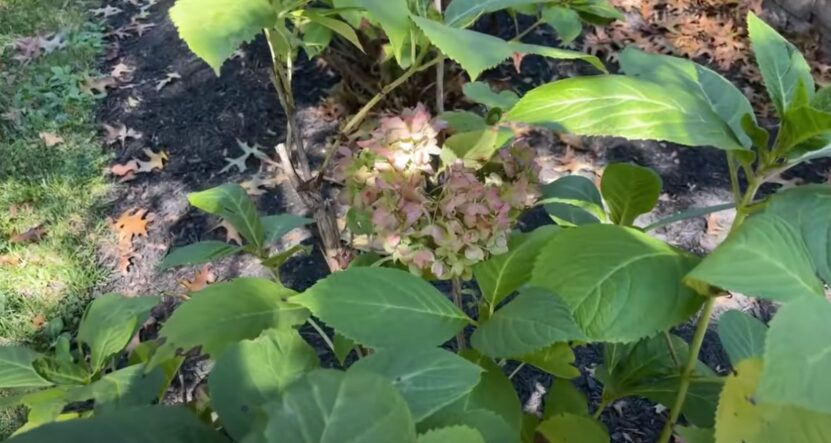The Buzz on Hydrangea Leaves Turning Yellow
The Buzz on Hydrangea Leaves Turning Yellow
Blog Article
The smart Trick of Hydrangea Leaves Turning Yellow That Nobody is Discussing
Table of ContentsHydrangea Leaves Turning Yellow for DummiesSome Known Incorrect Statements About Hydrangea Leaves Turning Yellow Not known Factual Statements About Hydrangea Leaves Turning Yellow Facts About Hydrangea Leaves Turning Yellow UncoveredFacts About Hydrangea Leaves Turning Yellow UncoveredThe 6-Minute Rule for Hydrangea Leaves Turning Yellow
You can try to avoid fungal illness by keeping your gardens cool and cost-free of particles. These fallen leaves that will certainly remain, waiting to assault in the following growing season.Copper fungicides are, however if they are overused they can become toxic to your plant. Clip the fallen leaves, and remove them from the garden.
If they aren't obtaining adequate water, their leaves will certainly brown. Hydrangeas have a in the lunchtime sun, and recovering when the sunlight has actually moved and the plants have time to recoup. If this occurs consistently you may observe brown and crunchy leaves that are sagging. This is their method of letting us recognize that it needs some added wetness.

How Hydrangea Leaves Turning Yellow can Save You Time, Stress, and Money.
Developed plants may need to be watered one to 3 times per week, depending on your problems. It might seem tempting to spray the leaves down.
Water the base of the plant,. Once the plant has actually recoiled, you can resume a routine watering timetable.
The container must be huge sufficient so the plant can expand and obtain all of the water and nutrients it needs. Panicles love the full sun.
Regardless of the variety, plan ahead and make sure your plant has plenty of security from the wind. You might hair transplant to a new place, or you might develop a wind obstacle making use of an additional plant, or fencing.
The Only Guide for Hydrangea Leaves Turning Yellow
Decorative grass, Rose of Sharon, or Holly bushes are just a couple of ideas of plants you might use to obstruct the wind. If you require to hair transplant, locate an area in your yard that is well protected from sun and wind. Hair transplanting is best done in the loss or the spring.
Every one of the above situations can occur to any gardener. Thankfully for all of us, hydrangeas are extremely durable, and will certainly more than likely recover extremely rapidly with a little love and treatment. The plants place is one of the most important variable when it concerns obtaining established and correct growth. With a little planning on planting location and appropriate maintenance, you'll have the ability to guarantee your hydrangeas!.
If Hydrangea leaves turn yellow and falls off later on, it's typically due to overwatering, as the plant can not uptake water and loses the fallen leaves to cut off transpiration. Following this, Hydrangea leaves begin to sag and shrivel. Because both conditions can create yellow fallen leaves, you should spot the difference between the overwatered and underwatered plant.
You can rescue the plant from yellow fallen leaves by using it the right light and positioning. If your plant gets yellow leaves, relocate to a dark place. Place Hydrangea plants indoors blog near an east-facing home window. Dapple the plant with curtains or UV protection sheets to obstruct direct warm.
How Hydrangea Leaves Turning Yellow can Save You Time, Stress, and Money.
, and temperature alterations can trigger yellowing leaves and brownish spots. If it obtains as well warm, the edges of the leaves end up being yellow, turn brownish and develop a crunchy texture.
Hefty soil can conveniently block the oxygen supply to the origins and sever the link with the upper components of the plant (fallen leaves). Hydrangea leaves alter their shade if they discover small inconveniences in the soil structure. This concern can create the Hydrangea delegates turn yellow, struggle with fallen leave drops, and provide a sagging plant compatible overwatering.
Yellow leaves in Hydrangeas are the initial signs of condition invasion, usually followed by black areas, browning, goes down, and wilting. Isolate the unhealthy or pest-infested plant from the healthy and balanced plants to prevent illness spread. If it is a yard plant, remove all the infected leaves making use of sterilized tools and cleanse up all the particles.
Cutting off assists Hydrangea color unneeded weight and coverage, permitting the growth of new leaves. The most effective time see here to trim Hydrangeas is springtime when the plant is all set to grow foliage for the next season. Examine for spent or unhealthy read here fallen leaves and reduce the base of a stalk that signs up with the fallen leaves and stem.
The Best Guide To Hydrangea Leaves Turning Yellow
Prevent cutting healthy or environment-friendly fallen leaves, and do not eliminate greater than 25% of the plant's vegetation. Gather the discarded leaves to melt or compost them. The major reason behind the red leaves in Hydrangea is inadequate dirt or environmental conditions. If Hydrangea fallen leaves have a white grainy substance on them, it indicates Powdery Mold infection.
Repot the plant yearly in spring or every 2 years if the development rate is slow (Hydrangea Leaves Turning Yellow).
There are 6 main reasons this could occur:: The plant does not get adequate sunlight.: The roots are either also wet or also dry.: The plant is as well cold.: The dirt is not acidic or alkaline enough for the hydrangea.: The plant isn't obtaining the best nutrients it requires to stay healthy and balanced.
Each reason influences the plant in a manner that can be fixed if we comprehend how to look after hydrangeas the ideal way. When we speak about insufficient light for hydrangeas, we suggest that the plant isn't getting sufficient sunshine. Hydrangeas choose intense light, but not straight, scorching sunlight. They typically prosper best with morning sunlight and mid-day shade.
Getting The Hydrangea Leaves Turning Yellow To Work
Without enough sunlight, the leaves can turn yellow, the plant can become weak, and it might produce fewer blooms. To guarantee a hydrangea receives sufficient light, it ought to be put in a spot where it can delight in the morning light and be safeguarded from the intense afternoon sunlight. Hydrangea Leaves Turning Yellow. Overwatering is when a hydrangea plant obtains even more water than it requires

This problem prevails in the fall as the weather changes or if a hydrangea is grown in a spot where it does not obtain adequate heat from the sun. It's essential to understand the best problems for hydrangeas to avoid low-temperature anxiety. For instance, a lot of hydrangeas grow finest in areas 6 to 9, where the climate is milder.
:max_bytes(150000):strip_icc()/GettyImages-1286441508-16633f72dd07438ba515bfb08157b9da.jpg)
Report this page